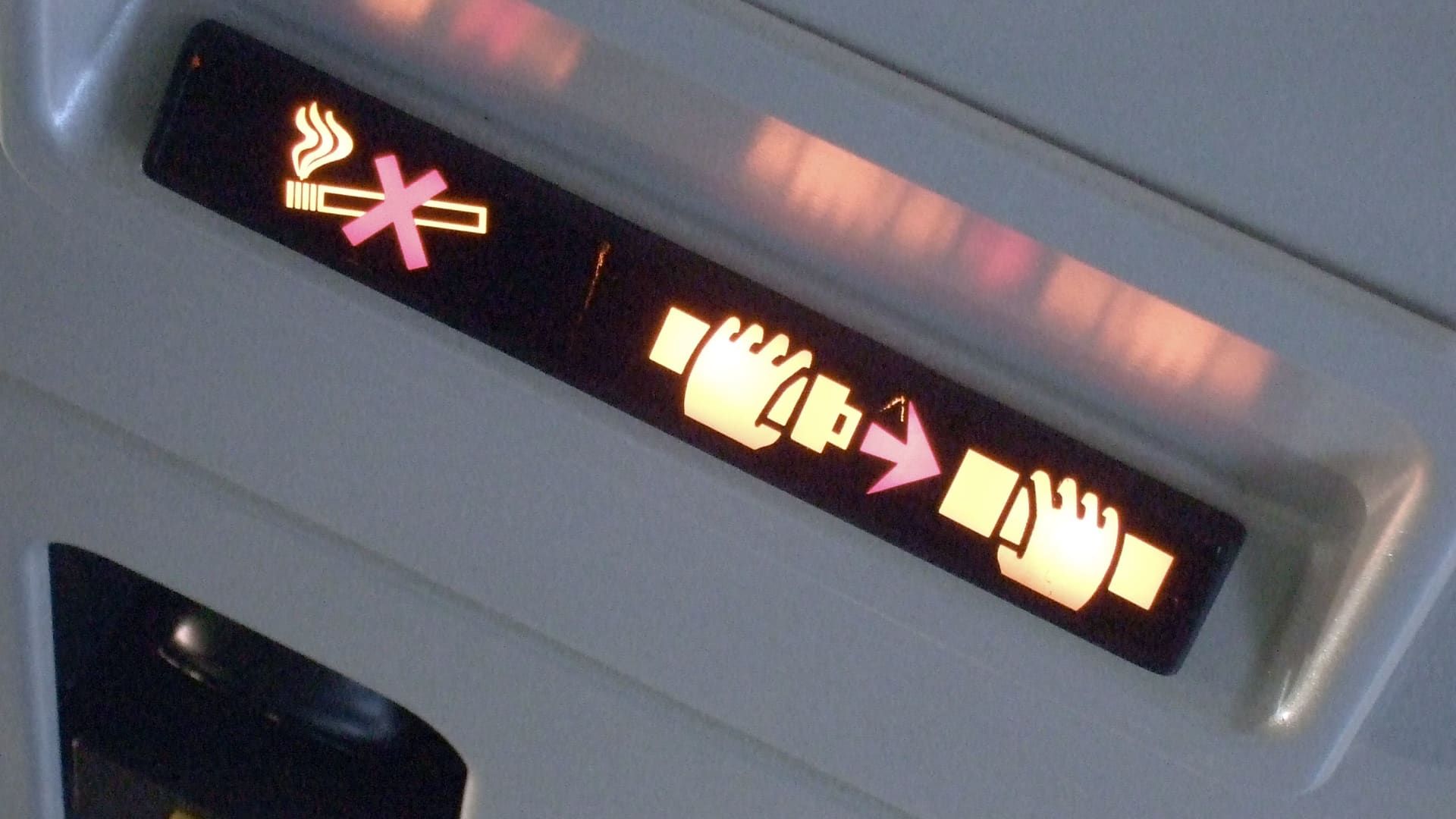A display showing the illuminated “fasten seat belt” sign and “no smoking” sign on board an airplane.
Jeff Overs | BBC news and current affairs | fake images
You trudge down the aisle to your seat. You double and triple check that you've gotten to the right row. He places his luggage in the overhead compartment and walks past his traveling companion to settle into his seat.
Work done. The stress-filled boarding process was completed. You disconnect.
It doesn't matter that the flight attendants have started their pre-flight safety demonstration, or that a video has started playing informing you of procedures in case of an emergency. Are you OK. You've seen this one before.
“The level of attention during safety demonstrations is extremely low,” says Sara Nelson, president of the Association of Flight Attendants (CWA), which represents cabin crews in United, Alaska, Border, Hawaiian and others.
There are many lessons to be learned from the recent air incidents, two in just the first week of the year. Among them: It's time to start paying attention to pre-takeoff safety demonstrations.
On January 2, all 379 people aboard a Japan Airlines Airbus 350-900 escaped from the burning plane at Tokyo's Haneda Airport after it collided with a Japanese coast guard plane carrying earthquake aid, killing five members of the crew of that plane.
Then, on January 5, a door plug on an Alaska Airlines plane exploded. boeing 737 Max 9 when the two-month-old plane flew at 16,000 feet, sending oxygen masks into passengers and leaving a gaping hole in row 26. No one was seriously injured on the flight, which returned to Portland, Oregon.
Both near-disasters underscore the importance of travelers paying attention to safety information and instructions from flight attendants before and during an accident.
Everyone from passengers to spectators to aviation executives has praised the crews of those Japan Airlines and Alaska Airlines flights for guiding passengers safely.
Please direct your attention
It's worth repeating that air travel is incredibly safe. There was not a single fatal accident on a commercial passenger plane in 2023, one of the safest years on record.
But that track record is largely due to safety standards and protocols. And during those first minutes of the flight, when the door is closed and security procedures are explained, there are plenty of distractions: streaming entertainment, emails and text messages, and, increasingly, gate-to-gate Wi-Fi.
However, according to Nelson, passengers didn't pay much attention even before the age of smartphones.
A bigger problem, he said, is that airlines have reduced the host staff on board over the years, while increasing the number of seats on each plane.
“Although newspapers, books and conversations used to be a distraction, so it's not just phones, I think when there were more hostesses directly in front of you, more people paid attention,” he said.
Airlines have gotten creative when it comes to capturing travelers' attention during the safety briefing.
Some will pause seatback screen entertainment during critical announcements. Others have introduced flashy production to video presentations to balance frequently repeated tutorials on oxygen masks and life jackets.
“The FAA requires airlines to provide pre-flight safety briefings on what to do if emergencies occur,” the Federal Aviation Administration said in a statement. “Reports must contain specific information, but the FAA does not tell airlines how to submit it.”
After the issue of listening to safety instructions comes the natural issue of following them.
The Japan Airlines inferno, which took 18 minutes to evacuate, prevented deaths among travelers in part because passengers left their carry-on bags, allowing for faster departure. The airline's safety briefing clearly explains why travelers should not carry luggage during an evacuation, and it appears to have helped.
In 2016, american airlines Flight 383 aborted takeoff after engine failure and caught fire at Chicago's O'Hare International Airport. The National Transportation Safety Board found that some passengers took their carry-on luggage with them during the emergency evacuation, even though they were told to leave their bags behind.
A U.S. Department of Transportation watchdog said in 2020 that it found a dozen reports of airplane evacuations between 2008 and 2018 in which crew members said passengers evacuated or attempted to evacuate their luggage. hand.
Seat belts on
It is also best for passengers to follow the seat belt sign and fasten their seat belt when seated, even if the sign is off, as instructed by flight attendants.
On Alaska Airlines Flight 1282, when the door power panel exploded, the plane was not at cruising altitude, meaning the passengers were probably seated and buckled up, not walking around the cabin, and the Flight attendant drink service had not started. That probably helped prevent injuries. The force of the event was so violent that it tore some headrests and seatbacks off the plane, according to the initial findings of a federal investigation.
Seat belts also help prevent injuries during turbulence.
“I think the flight attendants are doing a great job,” said Anthony Brickhouse, a professor of aerospace safety at Embry-Riddle Aeronautical University. “The flying public needs to do better.”
Nelson said more travelers are paying attention to safety demonstrations after an incident, such as the Alaska flight, whose photos and videos circulated widely on social media, but may not last.
“I've seen this happen throughout my career,” said Nelson, who joined United as a flight attendant in the 1990s and said passengers, shaken by a high-profile incident, often return to their indifferent customs. “The question is: Is it two weeks? Three? Maybe even six? There are short memories.”










